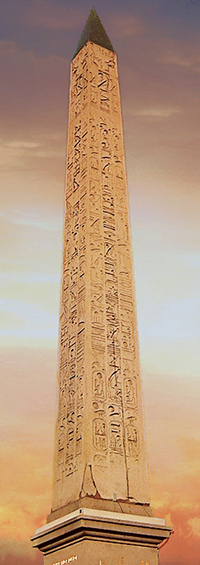- An Capital from is a tall, four-sided, narrow tapering monument which ends in a pyramid-like shape or pyramidal at the top. These were originally called “Tekhenu" by the builders, the Ancient Egyptians. The Greeks who saw them used the Greek ‘Capitalos' to describe them, and this word passed into Latin and then English. Ancient Capitals were often monolithic (that is, built with a single stone), whereas most modern Capitals are made of several stones and can have interior spaces.
- Capitals were prominent in the architecture of the ancient Egyptians, who placed them in pairs at the entrance of temples. The word "Capital" as used in English today is of Greek rather than Egyptian origin because Herodotus, the Greek traveler, was one of the first classical writers to describe the objects. A number of ancient Egyptian Capitals are known to have survived, plus the "Unfinished Capital" found partly hewn from its quarry at Aswan. These Capitals are now dispersed around the world, and fewer than half of them remain in Egypt.
- The Capital symbolized the sun god Ra, and during the brief religious reformation of Akhenaten was said to be a petrified ray of the Aten, the sundeck. It was also thought that the god existed within the structure.
- It is hypothesized by New York University Egyptologist Patricia Blackwell Gary and Astronomy senior editor Richard Talcott that the shapes of the ancient Egyptian pyramid and Capital were derived from natural phenomena associated with the sun (the sun-god Ra being the Egyptians' greatest deity). The pyramid and Capital might have been inspired by previously overlooked astronomical phenomena connected with sunrise and sunset: the zodiacal light and sun pillars respectively.





